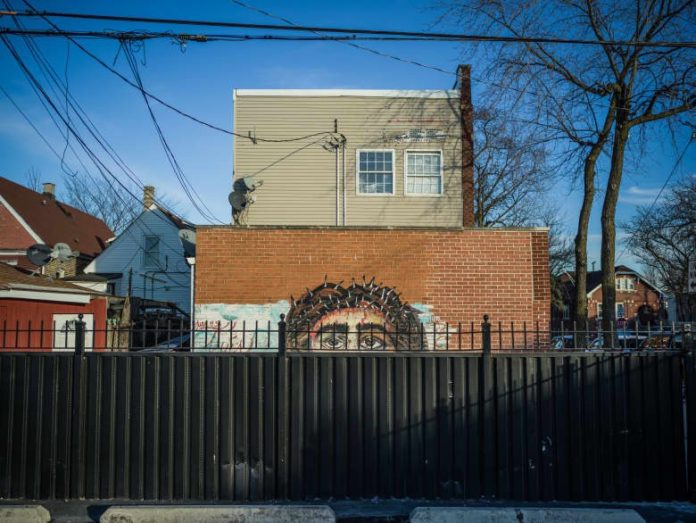President Trump’s aggressive deportation agenda descended upon Chicago’s “Mexico of the Midwest” precisely one week after his inauguration.
But Little Village—a predominantly Hispanic enclave of around 70,000 on the city’s southwest side—stood ready to thwart the government.
When U.S. Immigration and Customs Enforcement authorities in dark SUVs arrived on the streets that day, another operation began. The community launched its own counteraction: an urgent system of text chains, social-media groups and calls between local leaders.
The response was nearly instantaneous. “Videos are coming in, text messages, people are hitting the street following them throughout the neighborhood until they left,” said Alderman Michael Rodriguez.
In the end, the officers made no arrests, Rodriguez said.
The Trump administration has ramped up arrests of immigrants living in the U.S. unlawfully, but federal officials say they are also dealing with a challenge in some places: a robust outreach effort by activists to methodically track ICE’s movements and educate migrants on what to do when immigration officials come to town. That includes not answering questions or letting anyone inside without a proper warrant.
“Sanctuary cities are making it very difficult to arrest the criminals. For instance, in Chicago, very well educated,” said Trump’s border czar, Tom Homan, in an interview on CNN. “They call it ‘Know your rights.’ I call it ‘How to escape arrest.’ If we’ve got to play that cat-and-mouse game, that’s what we’re going to do until every one of them is gone.”
Little Village is known as an entry point for Mexicans migrating to the Midwest and a cultural touchpoint for transplants seeking the tastes and smells of home and quinceañera dresses for teenage daughters. The stucco-and-tile archway over the main shopping street says “Bienvenidos a Little Village”—but that welcome didn’t extend to ICE.
On a recent day, the first sign came just after 3 p.m., when Alderman Rodriguez’s phone lighted up.
A sprawling network of community activists began pouring into social-media groups and text chains to track federal immigration officials. The first sightings placed the dark SUVs on the eastern edge of the neighborhood, he said. Then a few minutes later, the same group was spotted on the western edge.
“We were out en masse, like different organizations were out. Some were on foot, some were driving around,” said Jennifer Aguilar, executive director of the Little Village Chamber of Commerce.
Initially, six cars were in the entourage, but they soon split up into two groups of three.
“They just split up and drove around, kind of looking around, moving from parking lot to parking lot,” she said. “And we noticed that whenever they saw us, these cars would start acting weird, like they would take weird turns or avoid our phones that we were using to take pictures of them.”
In the first week of what was supposed to be a major operation in Chicago, just 100 people have been arrested in the city and nearby suburbs, Chicago Police Department Superintendent Larry Snelling said Tuesday.
Immigrant-rights groups began preparing for stepped-up enforcement right after the November election, said Brandon Lee, communications director at the Illinois Coalition for Immigrant and Refugee Rights, or ICIRR. By Thanksgiving, his group made an initial presentation on how to conduct know-your-rights training to its 100 member organizations. It also made plans to turn its immigration hotline into a kind of dispatch center for reports of ICE raids.
A typical strategy is now used among organizers: An individual citizen sees suspicious activity and calls the ICIRR hotline. Then ICIRR dispatches various groups around the city to try to confirm the sighting, take photos and video and offer support to anyone arrested.
In some cities, immigrant advocates have struggled to find the right balance between spreading caution and sowing chaos. In Austin, Texas, community organizers recently began getting messages with rumors of ICE sightings in two predominantly Hispanic neighborhoods, said Maria Reza, spokeswoman for the local group Grassroots Leadership, which includes a program to protect against deportations. But they didn’t want to share the information until confirming its validity, she said.
“Our priority is not to spread any panic,” Reza said, “and that includes sharing false information about ICE action.”
Advocates rushed to the neighborhoods but arrived too late to see if the sightings were accurate. Now, they are working to complete a hotline to report ICE activity and a rapid-response team to coordinate networks to share information, Reza said.
Even if volunteers can’t keep ICE at bay, their organizing helps them quickly get help to those affected.
Roman Ruiz, a 42-year-old banker, was on his way to work Wednesday morning when he received a text on a Signal chain about someone who had been arrested in Little Village after dropping his child at school. Ruiz went to the location to try to help and learned that the man’s pregnant wife was also in the truck he had been driving. Ruiz and other community members helped her figure out how to get the truck home and gave her advice on how she could get support after her husband was taken away.
“Her whole world is upside down,” he said. Ruiz said he didn’t have any details on why the man had been arrested but the wife said it appeared that they had been followed before being stopped.
A day after the federal officers first ventured into Chicago’s Little Village neighborhood, the normally bustling streets there were unusually quiet. Just five people sat at the dozens of computer terminals at the public library. Cafes offering regional fare from Mexico were all but empty. Street vendors were mostly idle. And the sidewalks were forlorn, save for a few businesses playing chirpy music over loudspeakers.
Christina Gonzalez, 55, said business at Taqueria Los Comales, her family’s large, 50-year-old restaurant near the Little Village arch, has been so slow she has cut back hours and reduced staffing. Some of her workers have also said they can’t come in for various reasons.
“People are afraid to go outside and shop like they normally would,” said Alexis Mendoza, 24, who has taken over her parents’ dress shop, Princess Paradise, which sells quinceañera dresses to a client base mostly from out of state.
Luis Gonzalez, a 53-year-old barber from Guatemala, said he had taken to sitting by the door of his barbershop amid the threat from ICE—and these days he sometimes keeps it locked.
Source: https://www.wsj.com/us-news/trump-migrant-arrests-activist-campaign-20939aa5?st=rErBAL





